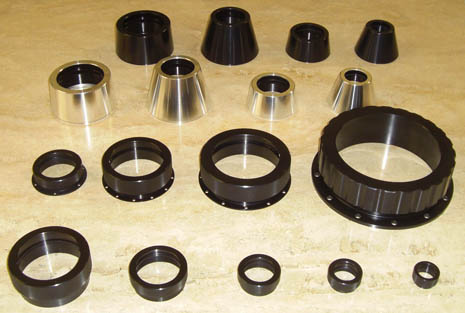You do not appreciate how a boosted dart/small diameter second stage with a boat tail functions to eliminate base drag because if you did you would not dump the boat tail. I'll suggest that you read about Gerry Bull and his low drag extended range projectiles, and the ballistics of current line of long range boat tail bullet and maybe you will glean some knowledge from that.
It's not my job to educate you on drag reduction so I'm done. Good luck with your project.
Bob, I had initially looked at a boosted dart concept before I started this thread as an option to achieve 100,000.' If the dart was 29mm in diameter (and with a tail cone to reduce base drag) I would have achieved it. However, the sim was too close for comfort.
With N Power a boosted dart becomes a very good option, and there is another thread on TRF that proposed to use N power to put a dart into "space" (100KM). I think that is a great project, and I wish him well. However it is not a project that I can afford becaue the speeds are much greater so the materials have to be much stronger and therefore much more expensive. PLUS, if I am going to spend the money to send a rocket this high, I want photos, and the 29mm diameter dart severely restricted the space I could use for a camera, which ultimately reduces the quality of the camera.
So I opted specifically to achieve 100,000' on M power using a 2-stage minimum diameter rocket. 3" for the booster. 2" for the sustainer. This configuration on M power, outperformed a boosted dart capable of carrying at least one, preferably two, onboard cameras in computer sims.
However, having a boat tail during the interstage coast phase is a cool idea. I could gain more altitude before the sustainer fires because of reduced base drag, and that additional altitude would be compounded by a higher altitude when the sustainer ignites. Plus, the use of a CTI tapered closure which is essentially CTI's version of a 54mm boat tail, but attached to the motor case instead of the airframe (Look up CTI Part # P54-TC) increases altitude even more. So during the interstage coast, base reduction is substantially reduced, and because of the tapered closure, base drag is still somewhat reduced after the sustainer motor burns out.
The difference between what you are talking about and what I am talking about is that you are looking at an aft retainer with a boat tail. I am looking at a forward retainer, but the aft motor closure is tapered, essentially creating the same effect as a boat tail.
You are definitely right in that reduction of base drag will result in increased altitude. I am just skinning the cat a different way. Please continue to add comments. I respect your thoughts.
- Evan






